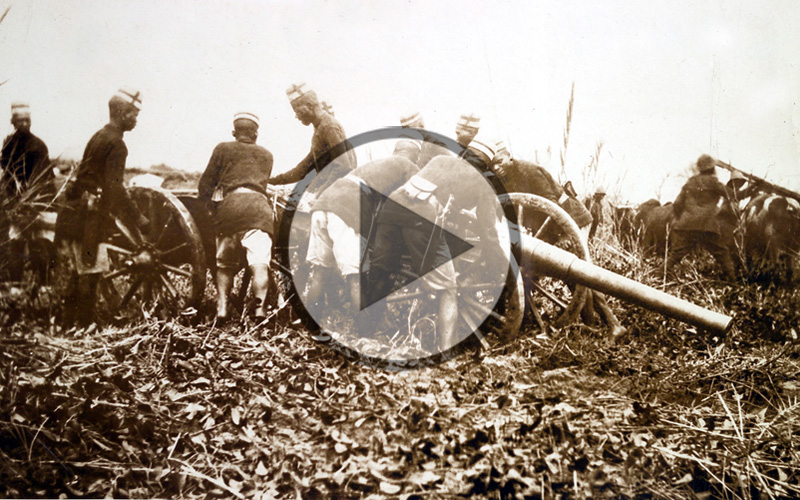Video transcript
When Britain went to war in 1914 its professional army of three quarters of a million men was small by European standards and suffered huge casualties in the early battles of the war. Over the next four years, 8 million men were conscripted or recruited into the British armed forces; almost half came from outside the UK. Without their service and sacrifice, Britain would have lost the war.
They came from across the Empire, from the plains and the mountains, from tiny islands and vast continents, serving on every front from the Equator to the Arctic Circle. Wherever they came from, they served the same cause half a world away from home. And one in ten of them never made it back.
The European conflict, sparked off in Sarajevo in 1914, spread like brushfire to the colonies and dominions of the European empires. Europe’s quarrels became a World War.
The Allied strategy of blockade – cutting Germany off from food and ammunition – meant that Germany’s African colonies were a prime target. Togoland [now Togo], Kamerun [now Cameroon] and German South West Africa [now Namibia] were all captured within 18 months, but German East Africa’s [now Tanzania, Rwanda and Burundi] resistance to the vastly superior forces thrown against it was one of the most extraordinary stories of the war.
Fought across an area greater than the size of Britain, France and Germany combined, it was a war of mobility and guerrilla tactics, fought in tropical jungles and vast swamps. Lions, crocodiles, snakes and parasites were an even deadlier threat than the enemy. Disease killed thirty times as many men as combat.
When the war began on 3 August 1914, the Germans had only 200 European troops and 2,500 native Askari soldiers. The British Empire forces included South African, British, Rhodesian, Indian, West Indian and native African troops from the Kings African Rifles, the Gold Coast [now Ghana] and Nigeria.
Disease, the climate and environment struck the Allied soldiers down in their thousands. It was a war of long hard marches in very difficult country.
Von Lettow Vorbeck fought a guerrilla campaign and his Askaris were tough fighters who knew the land and were more resistant to local diseases. By early 1917 Britain had learnt the lesson and black African troops largely replaced South Africans, Indians and Rhodesians. It was these soldiers who formed the backbone of the British Army.
Though Von Lettow-Vorbeck’s hit-and-run tactics kept the British off balance, weight of numbers told and by Autumn 1916 his troops were confined to the southern part of the colony. In July 1917, forced into a battle at Mahiwa, they won, but with high casualties they could ill afford.
They crossed into Portuguese East Africa [now Mozambique] to capture supplies and munitions; but the war had been long and numbers were dwindling. With his enemies closing in, he crossed back into German East Africa and then into the British territory of Northern Rhodesia [now Zambia]; where, three days after the end of the war in Europe, he learned that Germany had surrendered.
The longest campaign of World War One was over. British casualties totaled 22,000, with 11,189 killed. The Germans lost 2,000 men. Both sides relied on African soldiers and even more heavily on African porters. As many as 100,000 of them died in the war.
At least 365,000 civilians also lost their lives. Few knew why the war was being fought or why their lives were devastated, but the huge contribution of African soldiers and civilians had been vital to Britain’s war effort.
Explore the map for similar stories
East Africa
 First World War in Focus
First World War in Focus


